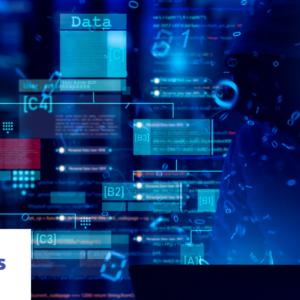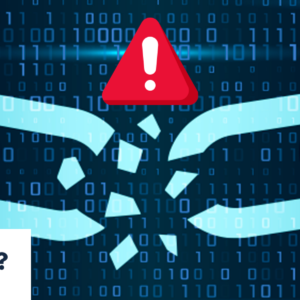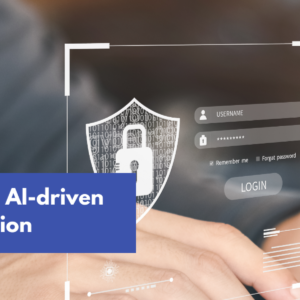Cybersecurity has gone to a whole new level. Never has this issue gotten such prominence, and it will be very important soon.
The advent of cloud applications and IoT devices has greatly changed the relationship between businesses, consumers, and technology. Such innovations have served as a link in fostering new business and collaboration across the globe. However, it has increased the urge for the never-ending sword fight. Cybersecurity cannot be ruled out in this scenario.
The auspicious advent of Cyber Security Awareness Month makes it imperative to comprehend about the new threats and how to secure corporate assets in such scenarios. This article will include an evaluation of the cybersecurity challenges and trends for 2025 and look forward to how organisations, no matter their size, succeed in the digital era.
Why Is Cyber Security Important For Corporate Information Systems?
The increased growth of IOT devices and cloud services has opened more avenues for cybercriminals to launch their attacks. Any connected device can be exploited as a potential gateway by the intruders. Cybersecurity is paramount in protecting these devices and the networks on which they operate.
Many industries are subject to legislation (e.g., GDPR, HIPAA), which requires companies to implement certain security measures. Breach of security policy is not an option as it is always accompanied by the hefty fines or legal action, hence the need for cybersecurity in the business space.
Cost of a Data Breach
To comprehend the ramifications of a cyber attack, we will look into the consequences that arise whenever a data breach occurs. An investigative report was published by IBM and the Ponemon Institute. They conducted the study on the basis of several organisations (604) and business professionals (3556) whose organisations have been hacked.
- As of 2024, the global average cost of a single data breach is USD 4.884 million, which is a 10% increase over the last years and the most costly to date.
- When it comes to the average cost savings, use of security AI and automation in prevention accrues an average cost saving of $2.22 million.
Future Trends: AI and Corporate Information Security
AI is either the greatest weapon in the war on cybersecurity or the greatest threat to its existence. In reality, it appears that there is a soft balance between these two extremes. It is unquestionable that AI technology will be positioned at the very heart of both the offensive and defensive approaches to information technology security and corporate information security. With this statement, it is obvious that organisations that seek to have an effective cyber defence management system will quickly adopt the blessings of AI. As malicious parties increasingly incorporate AI into their attacks, defenders will need to employ and use AI solutions with the same vigour in order to maintain security.
AI Adoption for Cyber Security by Corporations
A new study reports that the number of corporations in the U.S. spending $10M or more in A.I. will be multiplied nearly by threefolds within the year 2025. Apart from driving efficiency, AI will provide new tools for detecting threats, sifting through mountains of data, and finding flaws at a moment’s notice. AI does this by identifying patterns and anomalies that humans would tend to miss, thus lessening latency.
Zero Trust Architecture
In the year 2025, the zero trust security framework will take over and be anchored in the principle that states “never enough trust.” This is a zero-trust approach where the user validation process is ongoing and applies to all users, including those already within the network, the device, or any connections. This approach will certainly reduce the attack surfaces, provide more specific access control over the endpoints, and help decrease insider threats considering the rising trend of distributed networks and hybrid work.
Interaction with Third-Parties
When businesses start realising the risks of working with or buying from third parties, they will focus on supply chain protection. Based on one contemporary survey, the amount of security issues related to third parties has basically doubled every year. Additionally, major breaches like the SolarWinds hack, where attackers embedded malicious code into the Orion IT Monitoring Management System, have raised alarm across large corporations.
Embracing the Cloud Revolution
It is expected that nearly 85 percent of companies around the world will embrace a cloud-first strategy by the year 2025. With increased use of the cloud, the task of securing these settings will become more complex and more critical. Cloud-specific security solutions are focused on protecting applications and data in the Cloud. Hence, for enterprises adopting multi-cloud and hybrid models, there is a need for these AI-driven cybersecurity solutions.
Cyber Hygiene – The Weakest Link
With the improvements in technology, it is anticipated that even in 2025 and beyond, human error, if not the most significant, will still be an area of concern when it comes to cybersecurity. Cyber attackers will still be able to breach data through phishing and social engineering, with each average firm suffering more than 700 cyber attacks annually.
IT Training of Non-IT Employees
Training of the employees in non-IT departments on the understanding of basic IT procedures, regularly changing cybersecurity policies, use of appropriate management requirements, and phishing simulations will be commonplace.
Although cracking user-generated passwords may be made easier, hackers are also using AI to sift through large data sets and spot patterns.
The Rise of Deepfake Fraud
As the technologies for the creation of videos become more and more advanced, deepfakes are becoming increasingly useful as they can reproduce the looks and voices of famous people, employees, managers, and C-suite executives, etc. This technique may help spread disinformation and perpetrate cyber crimes such as business email compromise (BEC) thus threatening businesses and disrupting markets.
Conclusion – Cyber Security: Reactive to Proactive Strategy
To actively deal with the AI-driven cybersecurity threats, the change should fairly be proactive, not reactive. Organisations will have such monitoring systems in place in the future that problems can be detected and rectified without delay. Also, AI-enabled threat detection will help to ensure that threats will be prevented from occurring at all by identifying the threats before they materialize. This shift from responsive to preventative tactics will lessen the impact of breaches and greatly curtail the attackers’ window of opportunity.






Recent Comments